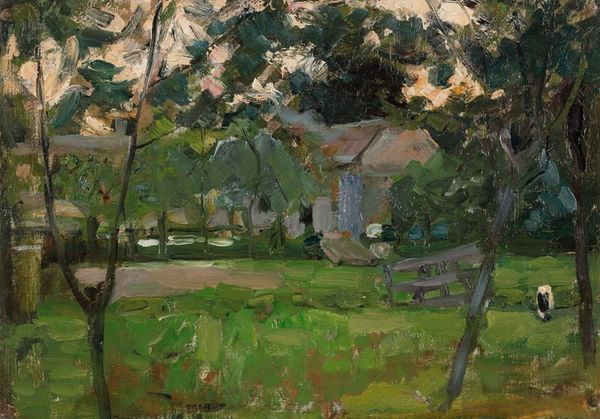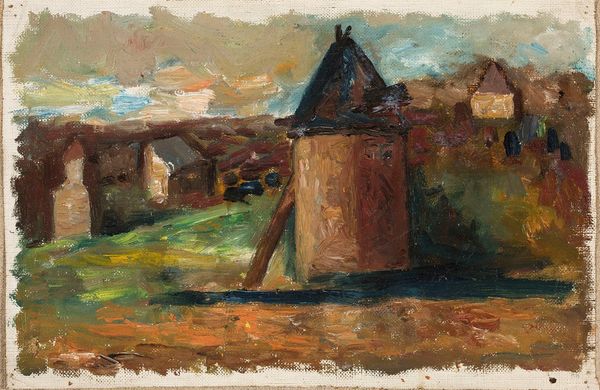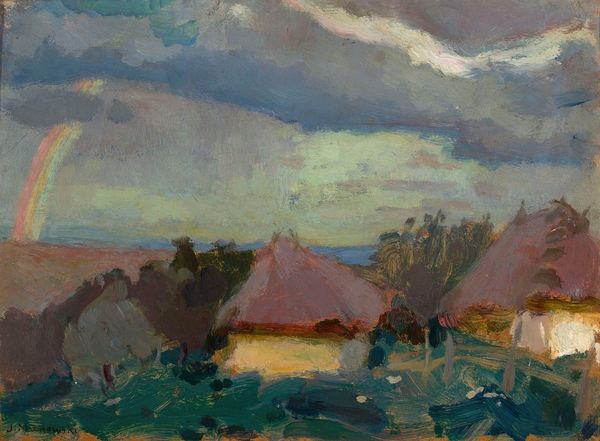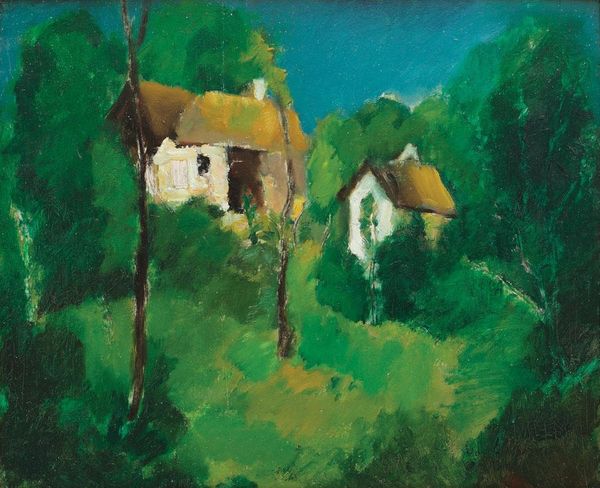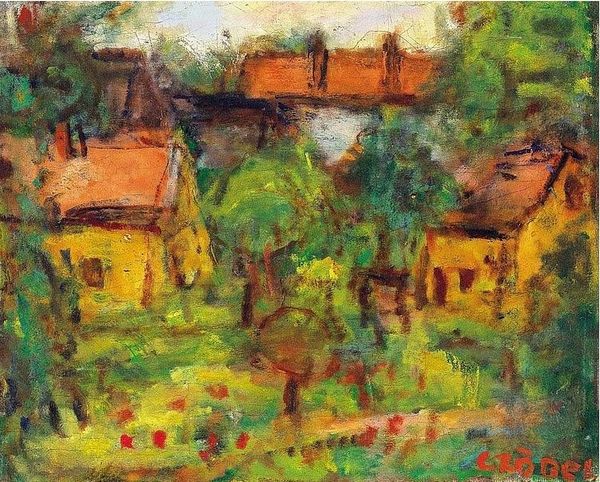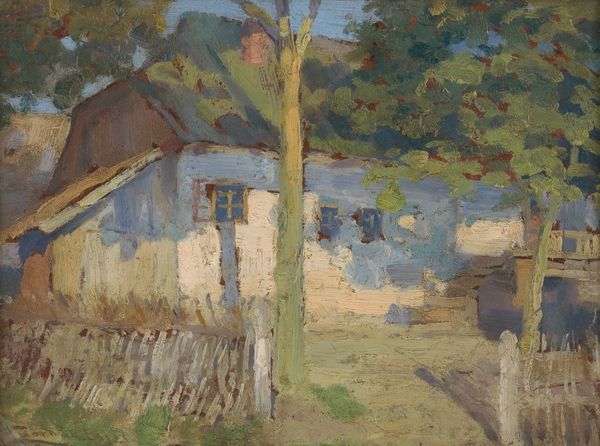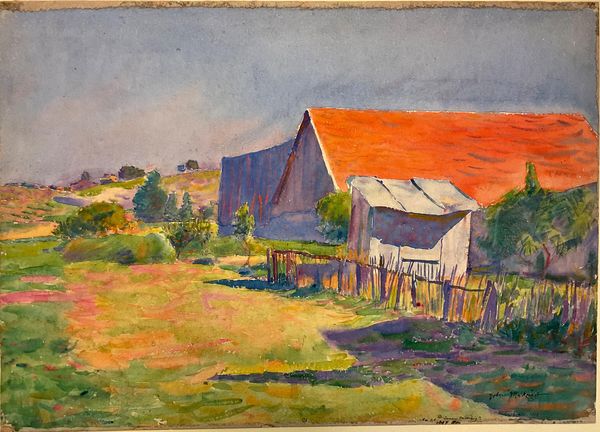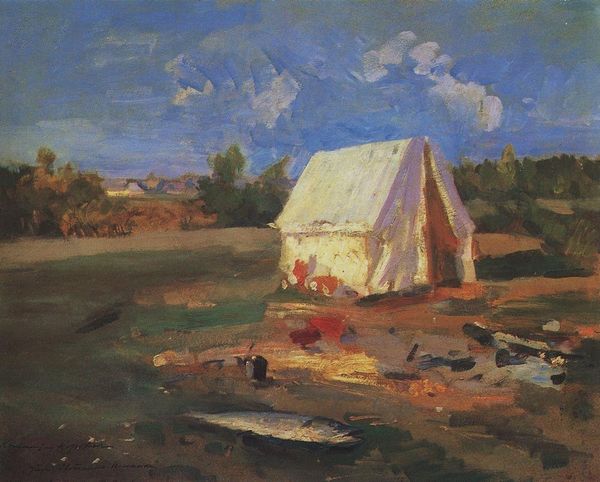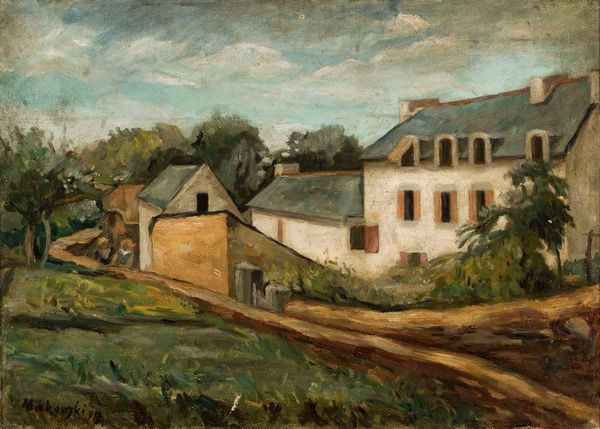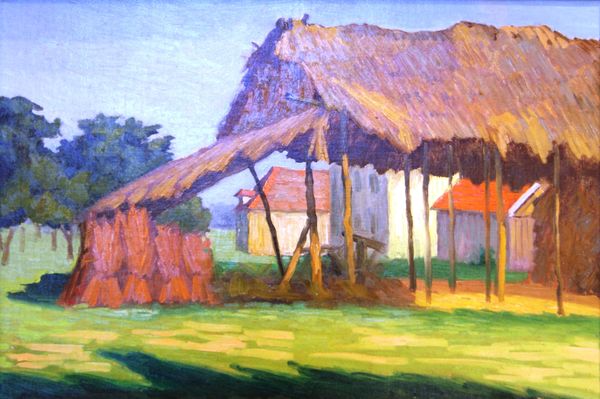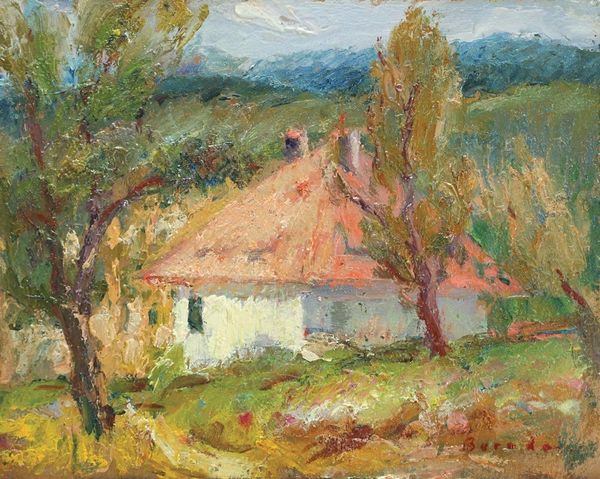
Copyright: Public Domain: Artvee
Editor: Standing before us is Piet Mondrian's "Farm Building With Well In Daylight," painted around 1907 using oil paints. It has this lovely, textured surface, like he really layered the paint on. I'm initially struck by how unassuming it is; almost a humble portrayal of rural life. What do you see in this piece, particularly regarding its context? Curator: Well, seeing this work as a historian, it’s impossible not to consider Mondrian’s later total abstraction. Early works like this served a vital role, steeped in the Post-Impressionist movement, as a crucial stepping stone. It's also an image tied up with specific political ideals through romanticising rural settings, especially as urban centres became points of power. The subject matter in itself conveys a narrative of nationhood. Consider, why represent a farm? What associations would people bring to that imagery? Editor: That’s interesting. So, the painting isn't just about the scene itself, but about what a farm represented at that time. Almost like propaganda? Curator: I wouldn't quite say propaganda, but it certainly plays into a vision of an idyllic, authentic past, carefully cultivated, often in contrast to rapid industrialisation and urbanization. The institutional support of landscape painting was really growing during the time; this created a popular genre that had its roots within national sentimentality. The very act of painting the Dutch countryside solidified identity. Do you think the impasto work, in this regard, has purpose? Editor: Definitely! The thickness of the paint gives the building a sense of solidity and permanence, grounding it. That’s so different from his later, more ethereal work. Curator: Exactly. This piece is part of a larger narrative; it connects the socio-political sphere to the canvas. Editor: Thanks; it really makes me rethink how I see this seemingly simple farm scene.
Comments
No comments
Be the first to comment and join the conversation on the ultimate creative platform.
